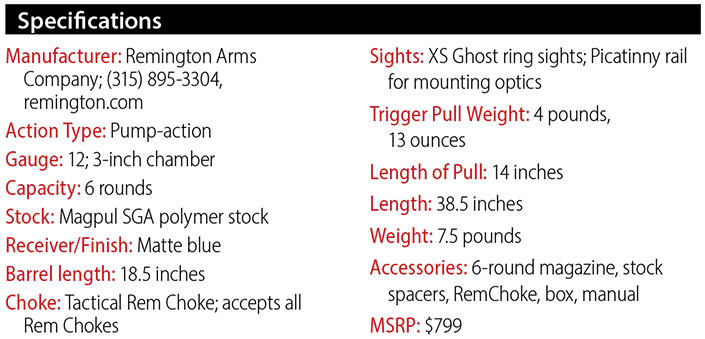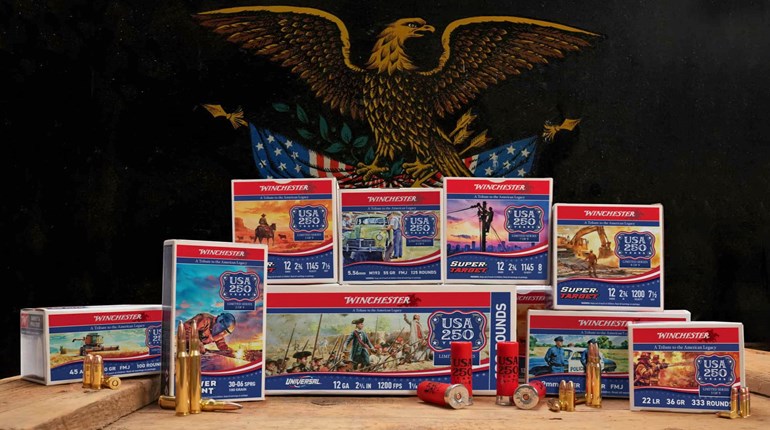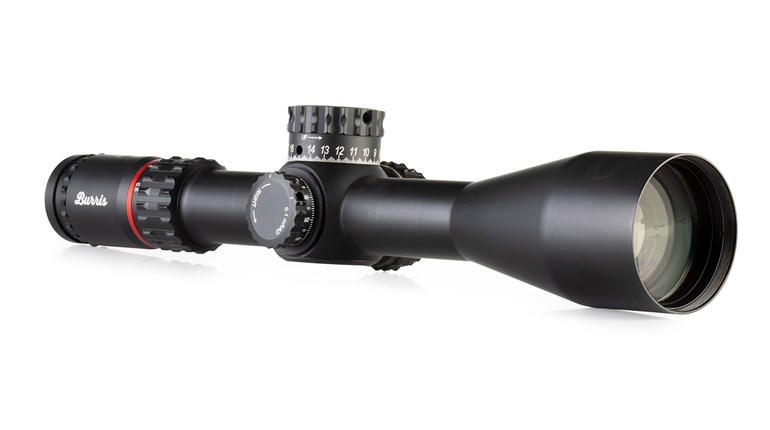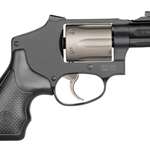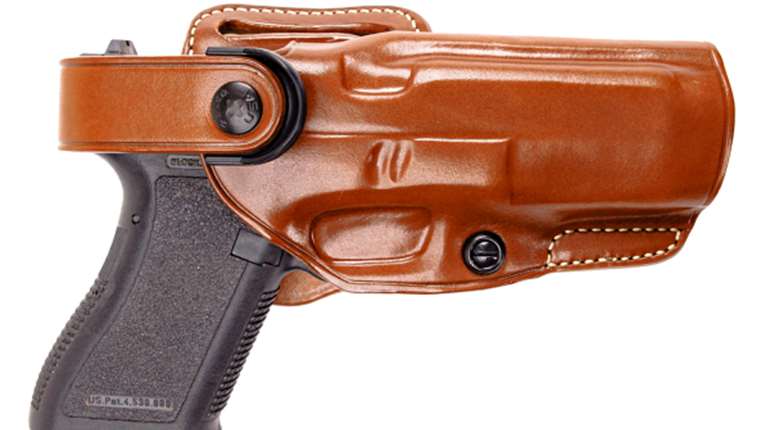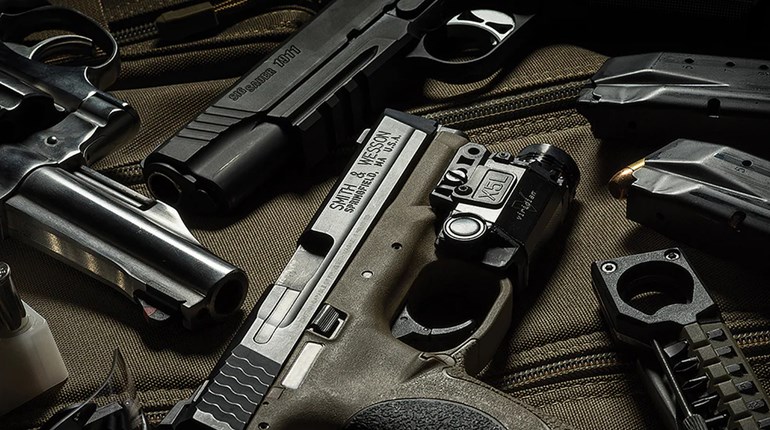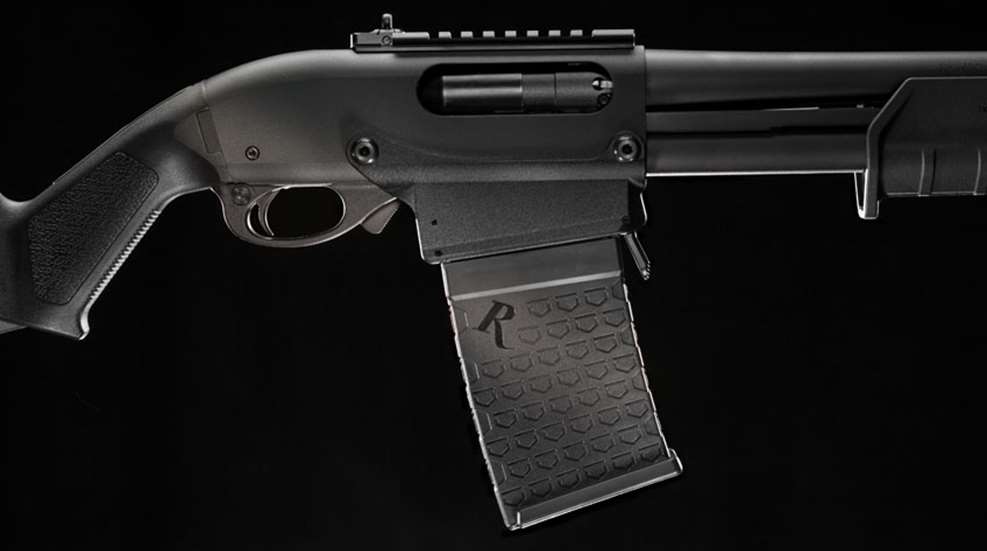
Remington gave a sneak peek at its new, removable-box-magazine-fed version of the venerable (we are required to use that in reference to anything that’s old, in case you were wondering) 870 in August 2017, at a writer’s event at Gunsite Academy in Paulden, AZ. Those of us attending the event got to see a first: The Remington 870 DM, the first time a pump-action shotgun fed from and came with a removable-box magazine straight from the factory.
Now, yes, there have been aftermarket variants like the Adaptive Tactical Sidewinder, and AR- and AK-based semi-automatic shotguns like the Tristar KRX or Fostech Origin-12 have used removable-box magazines for years. Saiga-12-based semi-auto shotguns have been around for decades, so the technology to feed a shotgun from a box magazine has been available—however, until now, it hadn’t made its way to the pump-action world.
This, naturally, has been cause for much gnashing of teeth and speculation. Some wondered why “Big Green” would start with a pump-action, pondering why Remington didn’t start with the Versa Max or 1100 to add a box magazine. Others questioned the magazine capacity: why offer a six-round magazine when the standard capacity of a “tactical” shotgun is equivalent or superior to that number? Even among imported, semi-auto shotguns with removable magazines, capacity is restricted to five rounds, meaning the Remington 870 DM only holds a one-round advantage. While only six-round magazines are currently offered, it is entirely possible and plausible that more-capacious variants will be offered in the future.

As for why Remington would start with the 870 platform, there are two very good reasons. First, the nature of the pump-action itself means the overall system is more robust—and less susceptible to the vagaries of shotgun ammunition types and power variations. A manually cycled action doesn’t care if the brass is high- or low-walled, nor if low-recoil velocity is of sufficient force to cycle the action. Manipulation of the action is solely dependent on the shooter, not the ammo, so a significant source of potential problems is avoided.
Second, the Remington 870 is, well, established. Daniel Cox, Remington’s shotguns manager, put it succinctly: “We opted to use the 870 as our initial product because the 870 is one of the most-prolific and trusted pump-action shotguns in the world. It’s a shotgun people know and trust, and because of that it was a perfect option in our mind to pilot the detachable-magazine setup. Starting with a product that is so well-known and trusted in the marketplace makes the jump to something so radically different easier for people.”

The 870 has been in production for nearly 70 years, and has sold in excess of 11 million units in that time. It’s a known quantity, something with which most gunnies are familiar and know how to operate. The manual-of-arms is second nature to countless enthusiasts, so changing how the shotgun is loaded can be more-easily explained and demonstrated. In fact, it’s arguable that the Remington 870 DM with a box magazine makes it even easier for a new shooter, in that there’s no learning curve in getting rounds into the gun. Load shells in the magazine, load magazine into the shotgun, run the action forward and it’s ready to go.
Differences between the box-magazine-fed 870 and its tube-magazine-fed predecessor are both subtle and obvious. There’s still a round, magazine-looking device under the barrel, but that’s only left as a guide for the slide—no need to reinvent the wheel. One look at the receiver, and the magazine well jutting out the bottom lets you know this isn’t your father’s Remington. While it looks like someone simply bolted it to the bottom of a standard 870, that’s not so.
“The magazine well is not compatible with an existing 870. The Remington 870 DM, while based on the same mechanical principals and a lot of the design of the original 870, does have several very critical parts that are not backward compatible with existing 870s,” Cox explained. He expanded on the differences, “The receiver is machined differently to accommodate the magazine well, and the round presentation from the detachable-box magazine. The trigger group is not the same as the old 870 either, again to accommodate the inclusion of a magazine well. The bolt and shell-feeding mechanism are also dedicated to the 870 DM.”
However, many parts are interchangeable between the DM and traditional 870 models. Barrels and stocks should swap with ease, and most fore-ends should work with either variant. Take care not to use a fore-end that overhangs the receiver area, for obvious reasons, but other than that, parts should be fairly “mix-and-match.”

This does bring about a criticism (I think unfounded) about the location of the magazine release on the Remington 870 DM. It is placed rather unconventionally at the front of the magazine well, and some theorize it could be inadvertently actuated with the rearward sliding of the fore-end. While theoretically possible, in several hundred rounds of testing it was not experienced with this model or the unit tested at Gunsite. If the support hand remains entirely on the fore-end, it is nigh impossible to activate the magazine release.
Other criticisms, however, are more theoretical in nature. Our Shotguns editor recently admitted to preferring tube-fed shotguns, and he’s not alone. Steve Fisher, of Sentinel Concepts, didn’t see a clear advantage to the removable magazine given the similar capacity to existing tube versions. Additionally, Fisher cautioned that, should they become available, larger-capacity magazines are unwieldy and bring their own set of challenges.
It really boils down to personal preference as to whether tube- or box-fed variants are a better fit. For those who, like your humble author, are well-versed in removable-box-magazine-fed rifles like the AR-15, it’s more intuitive and faster to strip an empty magazine and insert a fresh one to reload. For those who are more comfortable with the care and feeding of tubular-magazine-equipped arms, there’s not as much impetus to make the switch. Remington has made it easy, though; the standard Remington 870 DM retails for $529 MSRP (the tested version was the Magpul variant) while a comparable 870 is $443. Is it worth $86 to have the removable mag? That’s up to you.
Safety is a notable advantage in the removable-magazine camp. The 870 DM can be left completely empty in, say, an underbed safe with a loaded magazine separate, but handy. Should need arise, acquiring the shotgun and making ready is quick and simple—not so with going from an unloaded tubular-magazine version.
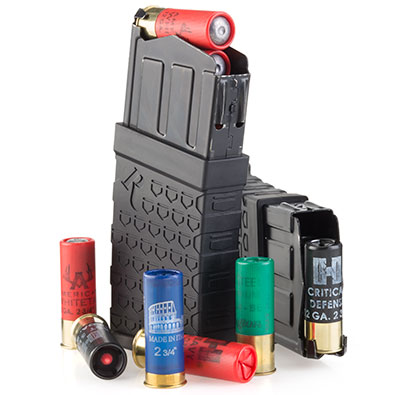
Another advantage of the removable-magazine-fed system on the Remington 870 DM is that of different ammunition types. One of the biggest pluses of the 12-gauge shotgun is the wide variety of shotshell loads out there: birdshot, buckshot, slugs, less-lethal and other, more exotic loads (mostly tailored for law enforcement or military, although various civilian offerings are available). Should, for example, someone in a rural setting have a need to switch between buckshot and slugs (say, for four-legged predators on a farm), it’s far simpler to have separate magazines and only a single round to eject than a full tube of buckshot when a couple slugs are needed.
What’s not up for debate, however, is the operation. It’s a Remington 870. It just plain works. Whether it’s eating from a tubular magazine or a box magazine, it’s going to feed rounds, fire ’em and eject spent shells all day, every day. We ran several hundred rounds of varied-power buckshot, birdshot and slugs at the writer’s event at Gunsite without incident, and similar testing here at headquarters yielded identical, incident-free results. It’s a hammer. You pick it up, it works, you put it back in the toolbox.
What does the future hold? Remington is being tight-lipped about the direction of the DM program, but it’s not hard to see how recent events and market forces might influence future models and options. Is it possible we’ll see some familiar Remington semi-auto shotguns using the DM technology? It would certainly make sense, and it would help to mainstream the concept of the removable-box-magazine-fed shotgun. For now, though, we have five shotguns and five firearms with the DM system, and once the Remington 870 DM line has had some time to gain approval and get noticed, the sky’s the limit on removable-box-mag scatterguns.

